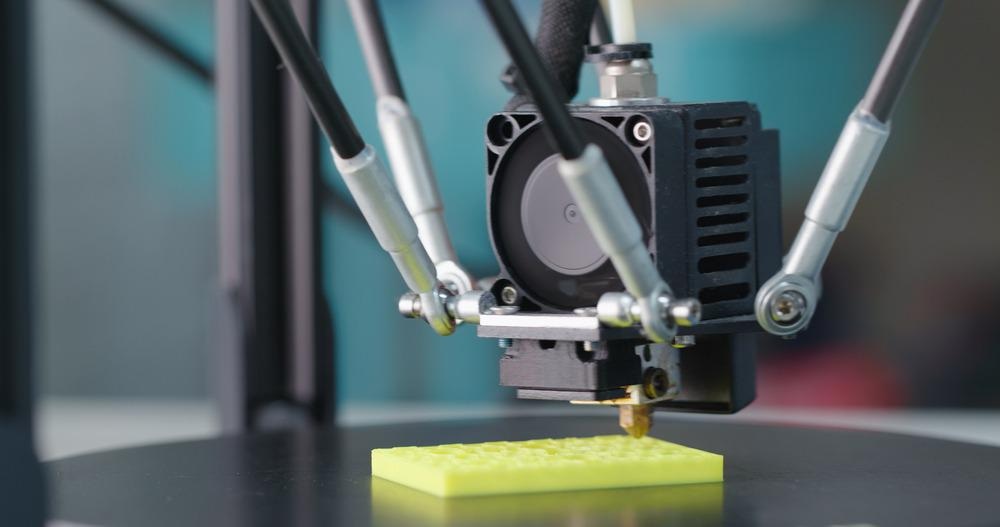An international team of scientists based at Graz University, Austria, and the Center for Nanophase Materials Sciences in Oak Ridge National Laboratory, and the University of Tennessee in the United States recently published the most wide-ranging measurements of nanowires’ evolution and features seen to date. The team hopes their paper will form the basis for future research into synthesizing freestanding nanostructures with 3D printing.

Image Credit: TriMech/Shutterstock.com
What Do We Know About Nanostructures?
A nanostructure is a structure that is too small to be seen with a conventional microscope but bigger than the molecular scale. Nanostructures have at least one dimension on the nanoscale, between 0.1 and 100 nm. (One nanometer – nm – is one-billionth of a meter, or 1×10⁻⁹ m).
Nanotextured surfaces like thin films have only one dimension on the nanoscale, thickness. The nanowires used for nanoscale 3D printing have two dimensions, but their length is much greater. Spherical nanoparticles have three dimensions on the nanoscale.
In each case, the nanostructure’s structure, surface, and materials behave according to the peculiar laws of quantum mechanics – along whichever dimension or dimensions are measured on the nanoscale.
This means that we know very little about how nanostructures interact with the world, mechanically, chemically, or electromagnetically, compared to objects and structures on bigger scales of size.
We know even less about nanowires, according to the paper’s authors.
Nanowires were an early nanostructure of interest to nanotechnology researchers, who dubbed them “quantum wires” due to their strange quantum mechanical behaviors. They are structures whose diameter is on the nanoscale and whose length is at least 1,000 times greater than their diameter or width.
Carbon nanotubes somewhat overtook nanowires in terms of exciting nanostructures in two dimensions in recent years. They are made by rolling thin films into a hollow tube and have excellent mechanical strength and semiconductor properties.
These Nanostructures Are Hacking Nature
Video Credit: Seeker/YouTube.com
Why Is It Important to Focus on Nanowires?
The precise measurement of nanowires in the recent study, published in Additive Manufacturing, is important for making calculations and simulations of nanostructures. It is especially relevant to feed into machine learning and human design seeking to optimize nanowires’ applications.
Nanowires are synthesized with an additive manufacturing process, Focused Electron Beam Induced Deposition (FEBID). FEBID is a way to 3D print nanowires, enabling the direct-write fabrication of complex 3D objects onto practically any substrate material.
Understanding the precise shape, reactions, evolution, and other properties of nanowires is essential to understanding the physical properties of freestanding nanostructures 3D printed with FEBID technology.
3D Printing On the Nanoscale
Additive manufacturing builds 3D objects up, usually layer by layer, from a computer model’s instructions.
Additive manufacturing processes use material more efficiently, provide greater design freedom, and achieve higher degrees of precision than traditional subtractive manufacturing methods, which involve cutting a shape out of a block of material.
It is also is much faster than traditional manufacturing, avoiding the need for molds and guides and enabling manufacturers to switch from one product or component to another without reconfiguring anything.
Applying the concepts of 3D printing to nanotechnology brings similar advantages. 3D printing nanostructures can be faster, less wasteful, and more precise than other “top-down” fabrication methods.
3D printing is the only technology capable of synthesizing many nanostructures, primarily freestanding nanostructures. Brittle ceramics can be shaped into high-order 3D structures only with additive manufacturing, which may predict the future of compact sensor design, energy scavengers, and diagnostic devices.
Another miniaturized 3D printing technology that will be key in the future of manufacturing at the nanoscale is focused electron beam induced deposition (FEBID). FEBID creates freestanding nanostructures out of nanowires, and the precise measurements of nanowires in the recent research will contribute to FEBID’s ongoing commercial adoption.
What is FEBID?
FEBID is a direct-writing technique that can be used to 3D print freestanding nanostructures. The technique involves adsorbing a precursor material on a substrate surface and then dissociating it in focus on an electron beam.
Also known as electron beam induced deposition (EBID), FEBID uses the electron beam to decompose gaseous molecules and depose non-volatile fragments onto the substrate. The beam comes from a scanning electron microscope, leading to the exceedingly high degrees of spatial accuracy that make the technique suitable for nanotechnology.
Researchers developing the technique have been able to create the world’s smallest magnet, fractal nanotrees, nanoloops, and superconducting nanowires using FEBID so far. Having been under close scrutiny for the last decade or so, FEBID is now at a state of maturity that means it can start to see applications in research or commercial fields.
The Future of FEBID
With the precise measurements of nanowires in the Additive Manufacturing paper, FEBID can now continue on its path towards wider adoption.
Remaining challenges remain, including improving methods for controlling metal content in FEBID structures and increasing the deposition yield. Future work in this field is likely to produce unexpected results for fundamental or application-driven researchers alike.
Continue reading: Carbon Nanotube Nanocomposite Ink for Additive Manufacturing.
References and Further Reading
Winkler, R. et al. (2021) Shape evolution and growth mechanisms of 3D-printed nanowires. Additive Manufacturing. Available at: https://doi.org/10.1016/j.addma.2021.102076
Berger, M. (2014) Nanotechnology and 3D-printing. Nanowerk. Available at: https://www.nanowerk.com/spotlight/spotid=37541.php
Huth, M. (2011) Focused Electron Beam Induced Deposition – Principles and Applications. Beilstein-Institut. Available at: https://www.beilstein-institut.de/download/267/pdf_huth.pdf
Huth, M. et al. (2012) Focused electron beam induced deposition: A perspective. Beilstein J Nanotechnology. Available at: https://doi.org/10.3762/bjnano.3.70
Disclaimer: The views expressed here are those of the author expressed in their private capacity and do not necessarily represent the views of AZoM.com Limited T/A AZoNetwork the owner and operator of this website. This disclaimer forms part of the Terms and conditions of use of this website.